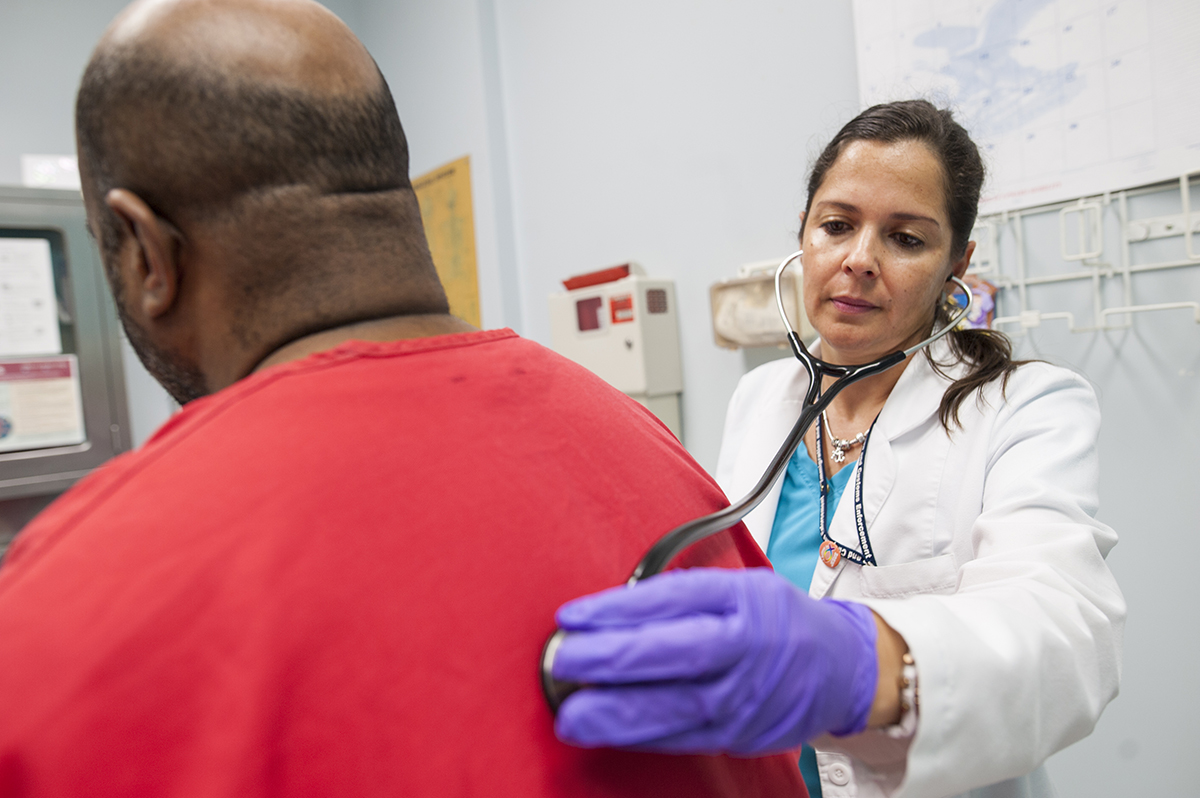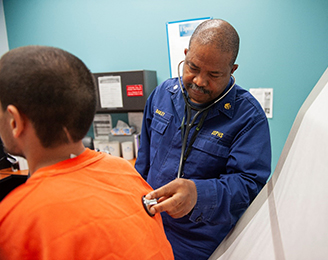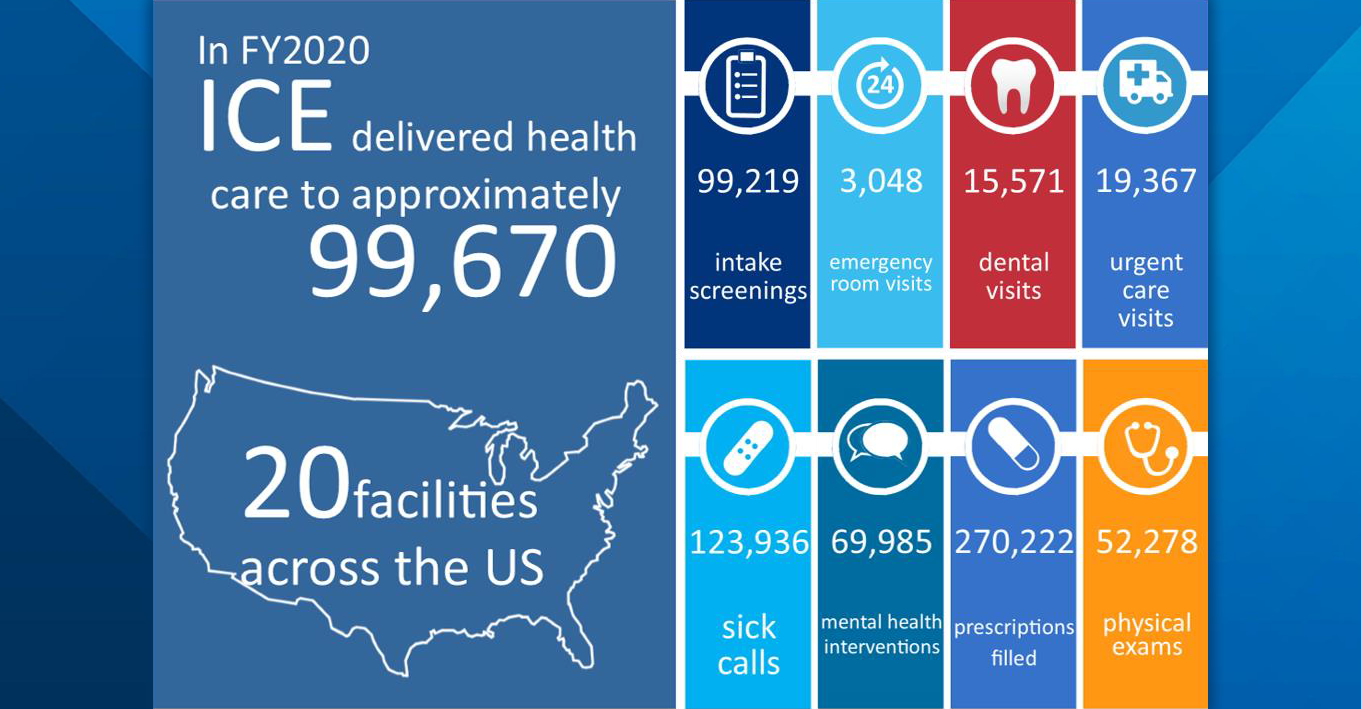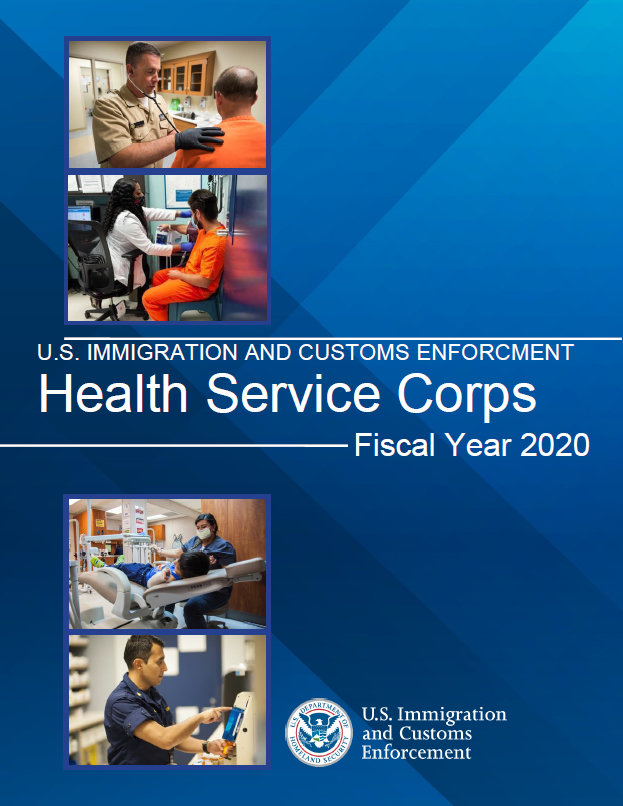Archived Content
In an effort to keep ICE.gov current, the archive contains content from a previous administration or is otherwise outdated. This information is archived and not reflective of current practice.
ICE releases first health service corps annual report
WASHINGTON – U.S. Immigration and Customs Enforcement (ICE) released today the ICE Health Service Corps (IHSC) Fiscal Year 2020 annual report. IHSC administers and manages a health care system that provides direct care to nearly 100,000 detainees housed at 20 designated facilities from 180 different nations, throughout the nation, including medical, dental, mental health care, and public health services. In FY20, IHSC executed over $315 million, an increase of $16.8 million from FY 2019 to support delivery of medical care services and perform COVID-19 operational requirements.
| Fiscal Year | IHSC Costs | Average Daily Population | Daily Cost per Person |
|---|---|---|---|
| 2016 | $190,215,479 | 34,240 | $15.22 |
| 2017 | $254,339,803 | 38,030 | $18.32 |
| 2018 | $268,708,158 | 42,183 | $17.45 |
| 2019 | $248,089,002 | 50,163 | $13.55 |
| 2020 | $315,098,069 | 33,724 | $25.59 |
Contrary to previous misperceptions, IHSC has an established, respected and renowned medical services corps. They provide a variety of medical services ranging from routine checkups to major surgeries for all of their detained population. This annual report details many of those services provided and highlights the achievements of the programs managed by ICE.
As part of its intake process, IHSC routinely screens for infectious disease, such as tuberculosis, within the detained population. The health system has protocols in place to isolate the ill, medically manage and treat infected individuals, and quarantine or cohort exposed individuals and groups to contain the disease. IHSC built upon its existing processes and infrastructure during the COVID-19 pandemic to enhance efforts to monitor, screen, test, detect, report, and treat the disease, and prevent disease spread. As the world learned more about the emerging pandemic, IHSC implemented measures to protect its workforce and ICE detainees.
If a person is detained, it is incumbent upon the United States government to provide all required medical services to ensure the health and wellbeing of each detainee under U.S. law. While IHSC does not directly provide or direct the medical care provided in non-IHSC-staffed facilities, IHSC does oversee those facilities’ compliance to national detention standards and coordinate care through medical referrals, as needed, through the Field Medical Coordinator Program.
Beginning in 1891, the Immigration Act authorized the U.S. Public Health Service (PHS) to examine and quarantine aliens on Ellis Island. In the 1980s, the role of PHS expanded when the U.S. Department of Health and Human Services (HHS) created the Division of Immigration and Health Services (DIHS). IHSC derives its primary operational authority from Section 232 of the Immigration and Nationality Act (INA), Immigration Act of 1891, the Public Health Service Act, and Title 42 of the U.S. Code of Federal Regulations. The work done and support provided to detainees is funded by Congress through annual appropriations.





